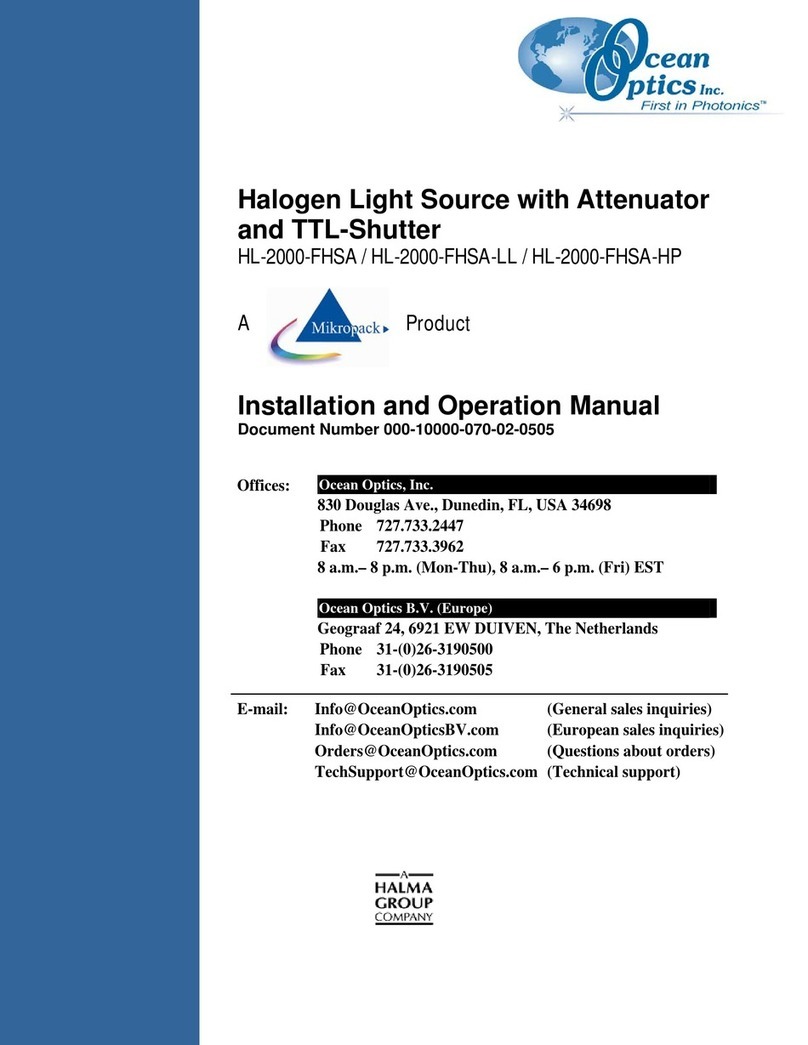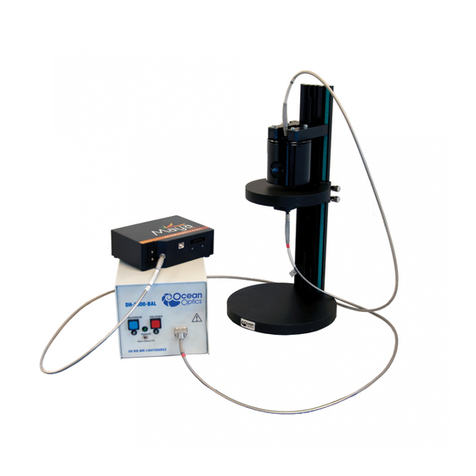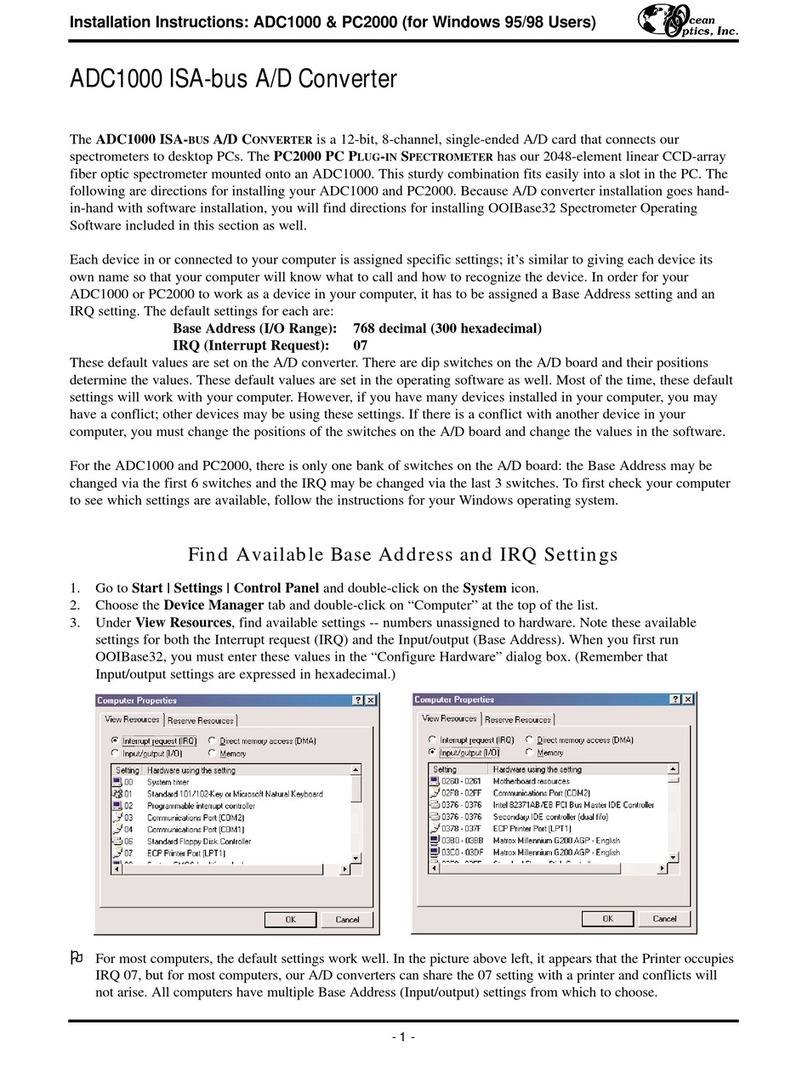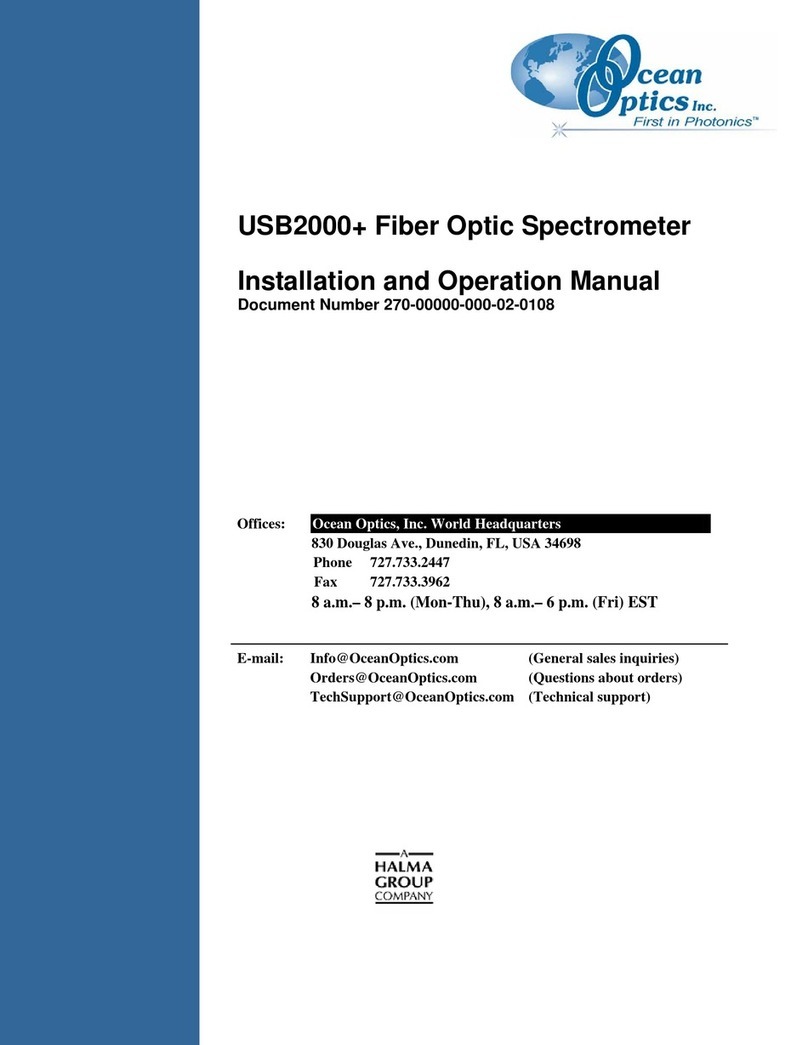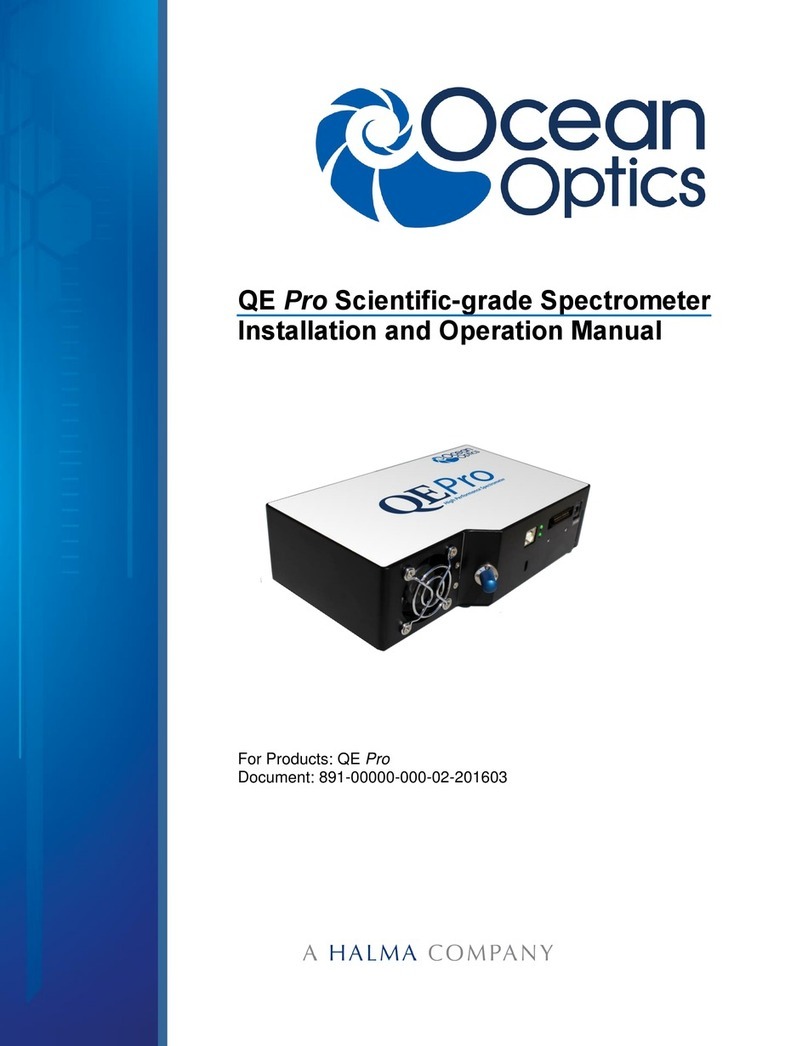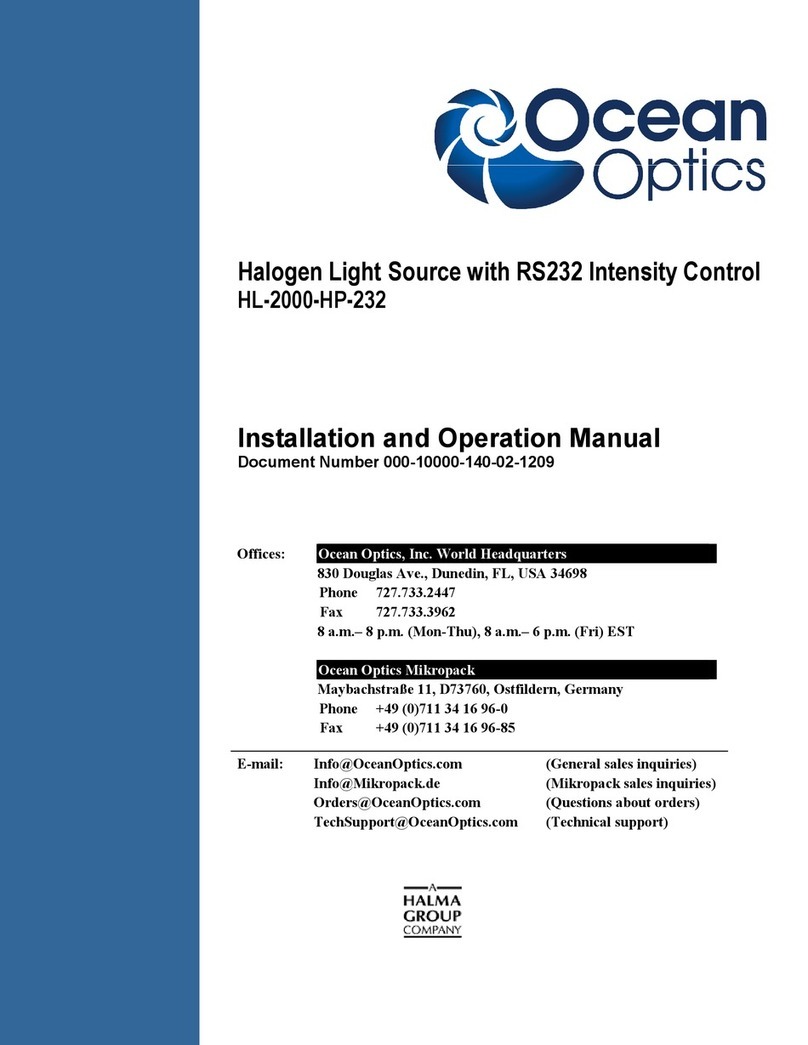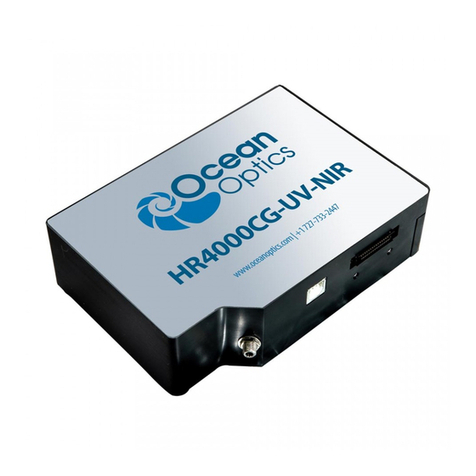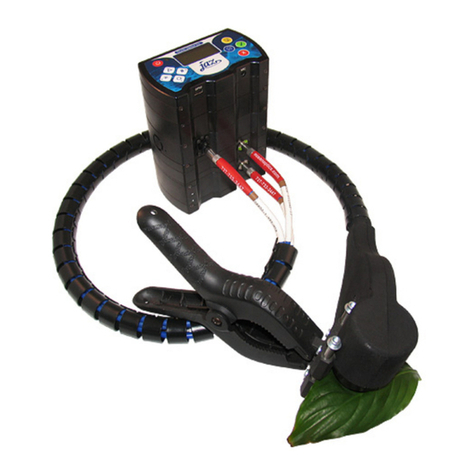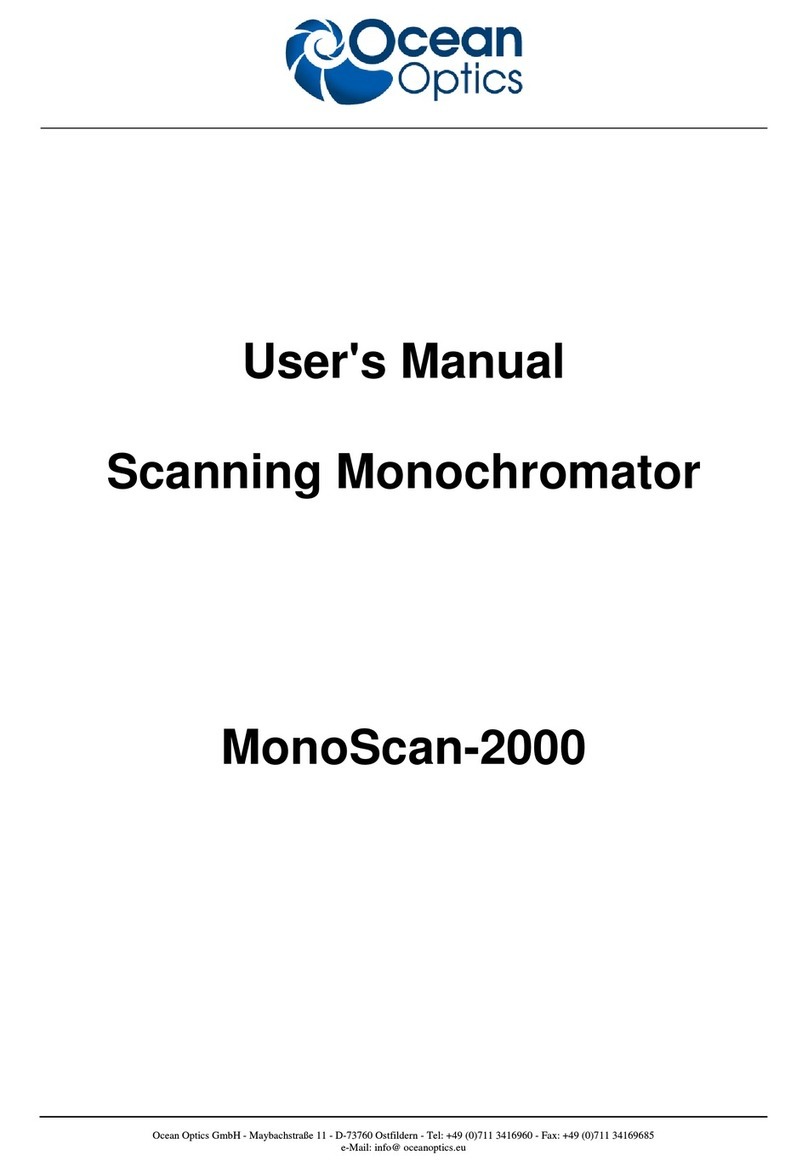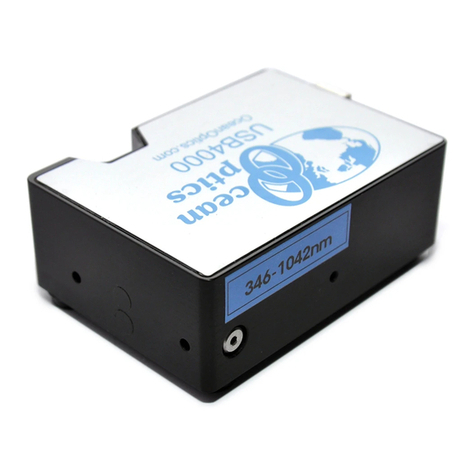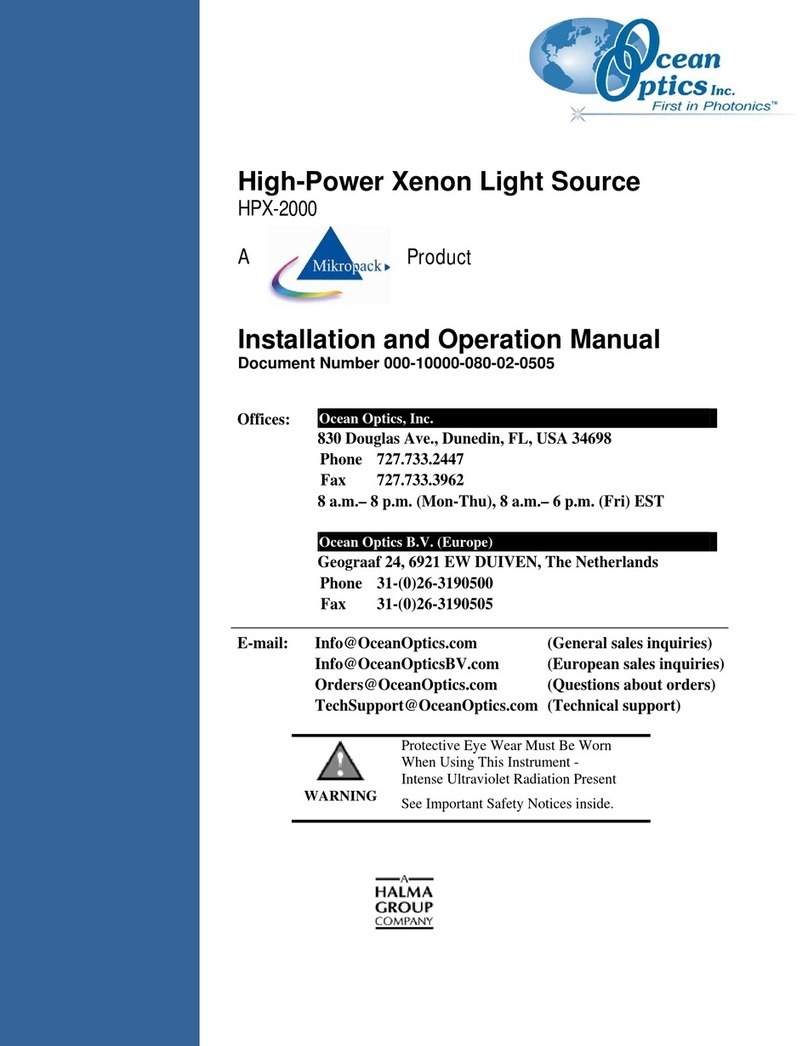
USB-ISS-UV/VIS Integrated Sampling System
USB-ISS-UV/VIS Integrated Sampling System 3
Specifications
Dimensions (mm): 198 x 105.1 x 40.6
Weight: 200 g
Power consumption: 1.5 A @ 5 VDC
Wavelength range (source): 200-1100 nm
Path length: 1 cm
Cuvette shape: Square
Light source: Deuterium tungsten
Bulb life (hours): 800 (deuterium); 2,000 (tungsten)
Time to stabilized output: ~30 minutes
Spectrometers: USB2000
For Technical Support, contact: techsupport@oceanoptics.com
For support by phone, call: (727) 733-2447
Operation Notes
If your USB-ISS-UV/VIS was preassembled with a USB2000 Spectrometer, it has been specifically aligned with
that particular spectrometer.
If your USB-ISS-UV/VIS was not preassembled with a USB2000 Spectrometer, ensure that you perform the
following tasks:
The USB2000 Spectrometer that you are using has an L2 Collection Lens on the internal CCD detector. This lens
enhances the signal for lower integration times and is typically included on all CHEM model spectrometers.
Consult the calibration sheet that accompanied the USB2000 to verify the spectrometer configuration, which is
also stored in your spectrometer’s memory.
Install the SMA Collimator (Step 2 of the Connect to USB2000 section, previous page).
Tighten the screws on the cuvette holder to fasten the cuvette in place (Adjust the Cuvette section, previous
page).
Artifact Measurements
On older USB2000 Spectrometers, the SMA 905 connector may be slightly off the central optical axis. While this
has no effect on fiber optic coupling, it will affect the lens type coupling of the USB-ISS-UV/VIS. Visible light may
be clipped early (750-800 nm) in some cases. In transmission and absorption experiments, this may cause an
artifact in this region (when measuring a cuvette of liquid) after taking an open-air reference. This artifact is also
seen with unparallel cuvettes.
You can remove this artifact when performing a transmission or absorption measurement. Ideally, you should use
a standard reference (a water-filled cuvette, for example) and take a dark and light reference to remove the
artifact. When measuring between matched cuvettes (reference and sample), the artifact is typically eliminated.
If you are unable to correct this situation and would like your system aligned, please contact Ocean Optics
Technical Support.
